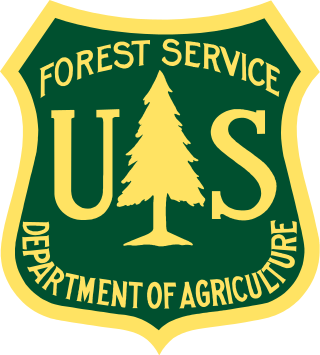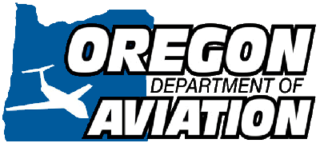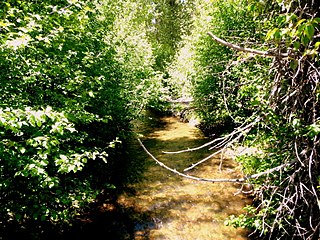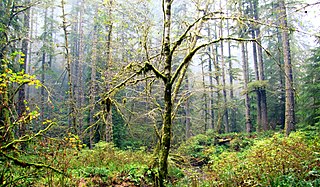Related Research Articles

The United States Forest Service (USFS) is an agency within the U.S. Department of Agriculture that administers the nation's 154 national forests and 20 national grasslands covering 193 million acres (780,000 km2) of land. The major divisions of the agency are the Chief's Office, National Forest System, State and Private Forestry, Business Operations, as well as Research and Development. The agency manages about 25% of federal lands and is the sole major national land management agency not part of the U.S. Department of the Interior.

The secretary of state is an official in the state governments of 47 of the 50 states of the United States, as well as Puerto Rico and other U.S. possessions. In Massachusetts, Pennsylvania, and Virginia, this official is called the secretary of the commonwealth. In states that have one, the secretary of state is the chief administrative officer of the state and is often the primary custodian of important state records. In the states of Alaska, Hawaii, and Utah, there is no secretary of state; in those states many duties that a secretary of state might normally execute fall within the domain of the lieutenant governor. Like the lieutenant governor, in most states, the secretary of state is in the line of succession to succeed the governor, in most cases immediately behind the lieutenant governor. In three states with no lieutenant governor as well as the U.S. territory of Puerto Rico, the secretary of state is first in the line of succession in the event of a gubernatorial vacancy.

The secretary of state of Oregon, an elected constitutional officer within the executive branch of the government of the U.S. state of Oregon, is first in the line of succession to the governor. The duties of the office are auditor of public accounts, chief elections officer, and administrator of public records. Additionally, the secretary of state serves on the Oregon State Land Board and chairs the Oregon Sustainability Board. Following every United States Census, if the Oregon Legislative Assembly cannot come to an agreement over changes to legislative redistricting, the duty falls to the secretary of state.

The Oregon State Treasurer is a constitutional officer within the executive branch of the government of the U.S. state of Oregon, elected by statewide vote to serve a four-year term. As chief financial officer for the state, the office holder heads the Oregon State Treasury, and with the Governor and Secretary of State, serves on the Land Board.

The Superintendent of Public Instruction, sometimes referred to as the State Superintendent of Schools, was a constitutional office within the executive branch of the Oregon state government from 1872 to 2012, when it was eliminated by state law. The superintendent acted as administrative officer of the State Board of Education and was executive head of the Department of Education. The superintendent was elected by the people of Oregon in a nonpartisan statewide ballot for a term of office of four years.

The Oregon Department of Forestry (ODF) is the agency of the government of the U.S. state of Oregon which performs a wide variety of functions relating to the management, regulation and protection of both public and private forest lands in the state. It was established in 1911 with the creation of the State Board of Forestry, its governing board, and the office of State Forester, appointed by that Board. It has the broad mandate of the State Forester's charge to "act on all matters pertaining to forestry." Specific activities of the department include forest fire prevention and protection; regulation of forest practices and promotion of forest stewardship; implementation of the Oregon Plan for Salmon and Watersheds; forest pest and disease detection and control; management of state-owned forestlands; nursery operation; forestry assistance to private woodland owners; forest resource research and planning; and community and urban forestry assistance.

The Oregon Department of Consumer and Business Services (DCBS) is the agency of the government of the U.S. state of Oregon, which has wide-ranging regulatory and consumer-protection authority in Oregon. It administers laws and rules governing workers' compensation benefits, workplace safety and health, building codes, and the operation of both insurance companies and financial institutions.

The Oregon Department of Aviation is an agency of the government of the U.S. state of Oregon chiefly responsible for matters relating to the continuing development of aviation as part of the state's transportation system, and the safety of its airways. In addition to operating the 28 airports owned by the State of Oregon, the department licenses more than 450 public or private airports, heliports and landing areas, and registers all pilots and non-military aircraft based within the state. Its activities include overseeing aviation system planning, providing administrative and technical support for community airport planning and development, administering an airport pavement maintenance program, providing small community aviation grants, and conducting aviation and public education programs.

The Oregon Department of Agriculture (ODA) is responsible for agriculture in Oregon. This agency of the government of the U.S. state of Oregon promotes and regulates food production and safety. It is headed by the director of agriculture, appointed by the governor of Oregon, subject to confirmation by the senate, advised by a board of ten members, and gubernatorial appointees. Through its nine divisions, it administers no fewer than 36 chapters of Oregon laws.
The Oregon Department of Environmental Quality (DEQ) is the chief regulatory agency of the government of the U.S. state of Oregon responsible for protecting and enhancing the state's natural resources and managing sanitary and toxic waste disposal. The agency employs approximately 700 scientists, engineers, technicians, administrators, and environmental specialists. It has headquarters in Portland, regional administrative offices in Bend, Eugene, and Portland; and field offices in Coos Bay, Medford, Pendleton, Salem, and The Dalles. The Laboratory and Environmental Assessment Division operates an environmental laboratory in Hillsboro. The agency's director has the authority to impose fines for violations of the state's anti-pollution laws. In addition to its state mandate, the United States Environmental Protection Agency (EPA) has delegated authority to DEQ to administer federal environmental programs including the federal Clean Air Act, Clean Water Act, and Resource Conservation and Recovery Act within the state.

The Oregon Department of Land Conservation and Development (DLCD) is the chief land-use planning and regulatory agency of the government of the U.S. state of Oregon. The DLCD administers the statewide land use planning program. A seven-member volunteer citizen board known as the Land Conservation and Development Commission (LCDC) guides DLCD.

The Florida Department of Environmental Protection (FDEP) is the Florida government agency responsible for environmental protection.
The Alabama Department of Conservation and Natural Resources (ADCNR) is the state agency responsible for the conservation and management of Alabama's natural resources including state parks, state lands, wildlife and aquatic resources. ADCNR also issues hunting and fishing licenses for the state. The department promotes wise stewardship and enjoyment of the state's natural resources through five divisions: Marine Resources, State Lands, State Parks and Wildlife and Freshwater Fisheries. Supporting those divisions are seven support sections: Accounting, Diversity and Recruiting, Engineering, Information and Education, Information Technology, Legal, and Personnel and Payroll.

Sun Pass State Forest is one of six state forests managed by the Oregon Department of Forestry. The forest is located 40 miles (64 km) north of Klamath Falls, Oregon near the southeastern corner of Crater Lake National Park. It is the largest single block of Oregon state forestry land east of the Cascade Mountains. The forest is managed as part of the Klamath-Lake District, comprising 21,317 acres (86.27 km2) of the 33,739 state-owned acres within the district.

Santiam State Forest is one of six state forests managed by the Oregon Department of Forestry. The forest is located approximately 25 miles (40 km) southeast of Salem, Oregon, and includes 47,871 acres (193.73 km2) on the western slope of the Cascade Mountains in three Oregon counties: Clackamas, Linn, and Marion. It is bounded on the east by the Willamette National Forest and Mount Hood National Forest. Silver Falls State Park is located west of the forest. The rest of the land surrounding the forest belongs to the Bureau of Land Management or is privately owned. The forest is managed as part of the Department of Forestry's North Cascade District.
Zschernig v. Miller, 389 U.S. 429 (1968), was a case in which the Supreme Court of the United States invalidated an Oregon statute for unconstitutionally intruding into the federal realm of foreign affairs even though the statute did not conflict with any federal treaty or statute.
The Alaska Department of Fish and Game (ADF&G) is a department within the government of Alaska. ADF&G's mission is to protect, maintain, and improve the fish, game, and aquatic plant resources of the state, and manage their use and development in the best interest of the economy and the well-being of the people of the state, consistent with the sustained yield principle. ADF&G manages approximately 750 active fisheries, 26 game management units, and 32 special areas. From resource policy to public education, the department considers public involvement essential to its mission and goals. The department is committed to working with tribes in Alaska and with a diverse group of State and Federal agencies. The department works cooperatively with various universities and nongovernmental organizations in formal and informal partnership arrangements, and assists local research or baseline environmental monitoring through citizen science programs.

The Mississippi secretary of state is an officer of Mississippi originally established under the Article IV, §14 of Mississippi Constitution of 1817, and was reestablished under Article V, §133 of the Mississippi Constitution of 1890.

Elliott State Forest is a state forest in Coos and Douglas counties of the U.S. state of Oregon, between Coos Bay and Reedsport in the Oregon Coast Range. The first state forest established in Oregon, it is named after the state's first state forester Francis Elliott. Trees commonly found in this forest are the Douglas-fir, western hemlock, western redcedar, bigleaf maple, and red alder.
References
- ↑ "Division of State Lands: Administrative Overview". Oregon Secretary of State. November 2009. Retrieved 2012-02-18.
- ↑ "Division of State Lands: Administrative Overview" (PDF). Oregon Archives Division (Official website). Oregon Secretary of State. July 2002. Retrieved 2006-12-10.
- ↑ Douglas, William O. (15 January 1968). "Zschernig v. Miller - 389 U.S. 429 (1968)". US Supreme Court Center. Justia. Retrieved 21 April 2014.
- ↑ "Division of State Lands: Administrative Overview" (PDF). Oregon Archives Division (Official website). Oregon Secretary of State. July 2002. Retrieved 2006-12-10.
- ↑ "Oregon State Land Board". Oregon Department of State Lands (Official website). Oregon Department of State Lands. 2006. Retrieved 2006-12-10.
- ↑ "Division of State Lands: Administrative Overview" (PDF). Oregon Archives Division (Official website). Oregon Secretary of State. July 2002. Retrieved 2006-12-10.
- ↑ "Division of State Lands: Administrative Overview" (PDF). Oregon Archives Division (Official website). Oregon Secretary of State. July 2002. Retrieved 2006-12-10.